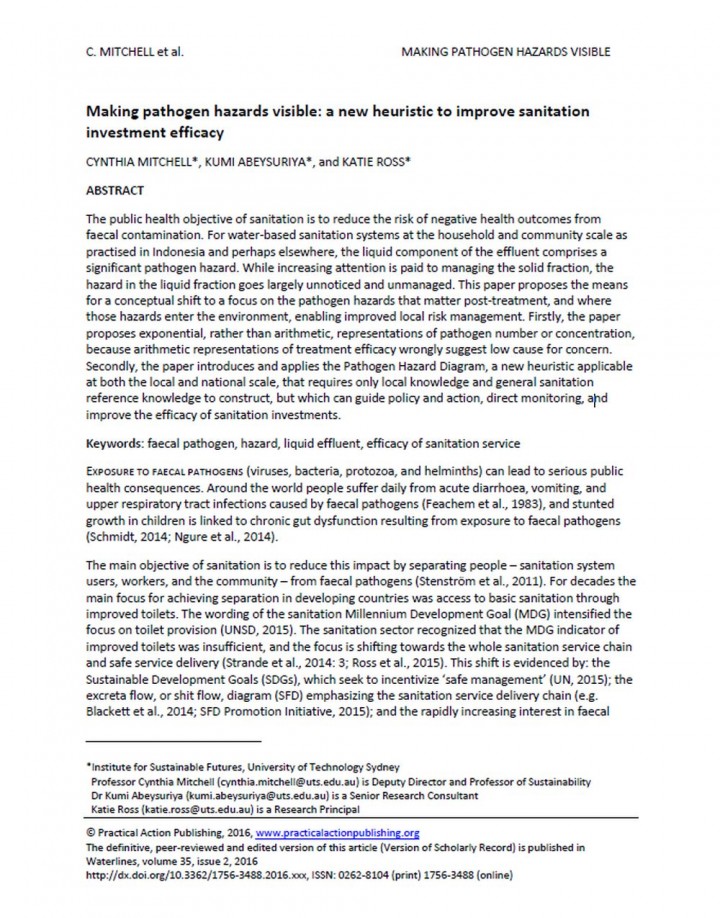Making pathogen hazards visible: a new heuristic to improve sanitation investment efficacy
Mitchell, C. et al. (2016)

Published in: 2016
Pages: 18
Publisher:
Practical Action Publishing
Author:
Mitchell, C. et al.
Uploaded by:
SuSanA Admin
Partner profile:
common upload
2858 Views
8 Downloads
The public health objective of sanitation is to reduce the risk of negative health outcomes from faecal contamination. For water-based sanitation systems at the household and community scale as practised in Indonesia and perhaps elsewhere, the liquid component of the effluent comprises a significant pathogen hazard. While increasing attention is paid to managing the solid fraction, the hazard in the liquid fraction goes largely unnoticed and unmanaged. This paper proposes the means for a conceptual shift to a focus on the pathogen hazards that matter post-treatment, and where those hazards enter the environment, enabling improved local risk management. Firstly, the paper proposes exponential, rather than arithmetic, representations of pathogen number or concentration, because arithmetic representations of treatment efficacy wrongly suggest low cause for concern. Secondly, the paper introduces and applies the Pathogen Hazard Diagram, a new heuristic applicable at both the local and national scale, that requires only local knowledge and general sanitation reference knowledge to construct, but which can guide policy and action, direct monitoring, and improve the efficacy of sanitation investments.
Bibliographic information
Mitchell, C. et al. (2016). Making pathogen hazards visible: a new heuristic to improve sanitation investment efficacy. Practical Action Publishing
Filter tags
English















